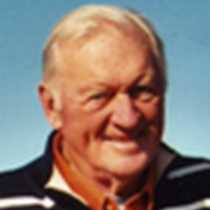Tallinn, Estonia
In the early morning the comparatively smaller National Geographic Endeavour tied up among a flotilla of ships, including Tallilink passenger and car ferries, and noticeably larger cruise ships. Despite being Sunday, by 10:00 A.M the shoreline and city lanes were awake and in motion.
Chartered motor coaches carried us on a circuitous, scenic route along parks, byways, and Tallinn's shoreline, followed by a narrated walking exploration of the city's heights, slopes, and the Old Town. Tallinn's 10th century past, and the town's fragile wooden buildings, were barely evident. That ancient time of simple castles on the Toompea (Dome Hill) has been replaced by the Danish period (1219-1346) of meandering streets, guild houses, convents, warehouses and soaring rock walls. The Lutheran and Orthodox cathedrals (pictured) were especially impressive, offering numerous opportunities for photographs.
Tallinn's later life as an active member of the Hanseatic League (early 19th century) contributed to the erection of a vast array of commercial buildings and port improvements. These physical layers of local history are being slowly uncovered through excavations, especially along Sauna Street. Some of the excavated results have revealed remnants of gardens, defenses, a moat and palisade, as well as everyday utensils.
Few Baltic nations have been so dramatically shaped by outside political and military events as Estonia. Beginning in 1918, a form of independence came to Estonia, followed by years of German and Russian incursions. The happy ending occurred in 199l when the Supreme Soviet of Estonia declared the re-establishment of national independence. The next important milestone along the road to relative prosperity and national pride occurred in 2004 when Estonia was welcomed as a full member of the European Union., and in 2007 they are expected to adopt the Euro as their official currency.
During a two-hour walking tour, shops appeared along the narrow lanes and in the city squares. The happy result was that virtually every one of us found a minute or two to acquire Estonian-carved wood, golden amber, local pottery or linen delicacies. Local guides affirmed that the old meets the new in Tallinn. Small shops displaying handicrafts unobtrusively mix with modern store fronts displaying upscale clothing and furnishings. In fact, gritty port activities and large shipments of forest products have adjusted to a new electronics economy, the wave of the future as Estonians see it.
After lunch the lounge was venue for assistant cruise director Lisa Trotter's disembarkation talk (St. Petersburg tomorrow), followed by historian Junius Rochester discussing "Peter the Great and Vitus Bering." Tea time provided a quiet period before naturalist Brent Houston described next year's Lindblad Expeditions south of the Equator.
Brimming with history and Medieval and modern visions of Tallinn, we all joined in a final salute to the cruise at the Captain's cocktail hour and dinner.
In the early morning the comparatively smaller National Geographic Endeavour tied up among a flotilla of ships, including Tallilink passenger and car ferries, and noticeably larger cruise ships. Despite being Sunday, by 10:00 A.M the shoreline and city lanes were awake and in motion.
Chartered motor coaches carried us on a circuitous, scenic route along parks, byways, and Tallinn's shoreline, followed by a narrated walking exploration of the city's heights, slopes, and the Old Town. Tallinn's 10th century past, and the town's fragile wooden buildings, were barely evident. That ancient time of simple castles on the Toompea (Dome Hill) has been replaced by the Danish period (1219-1346) of meandering streets, guild houses, convents, warehouses and soaring rock walls. The Lutheran and Orthodox cathedrals (pictured) were especially impressive, offering numerous opportunities for photographs.
Tallinn's later life as an active member of the Hanseatic League (early 19th century) contributed to the erection of a vast array of commercial buildings and port improvements. These physical layers of local history are being slowly uncovered through excavations, especially along Sauna Street. Some of the excavated results have revealed remnants of gardens, defenses, a moat and palisade, as well as everyday utensils.
Few Baltic nations have been so dramatically shaped by outside political and military events as Estonia. Beginning in 1918, a form of independence came to Estonia, followed by years of German and Russian incursions. The happy ending occurred in 199l when the Supreme Soviet of Estonia declared the re-establishment of national independence. The next important milestone along the road to relative prosperity and national pride occurred in 2004 when Estonia was welcomed as a full member of the European Union., and in 2007 they are expected to adopt the Euro as their official currency.
During a two-hour walking tour, shops appeared along the narrow lanes and in the city squares. The happy result was that virtually every one of us found a minute or two to acquire Estonian-carved wood, golden amber, local pottery or linen delicacies. Local guides affirmed that the old meets the new in Tallinn. Small shops displaying handicrafts unobtrusively mix with modern store fronts displaying upscale clothing and furnishings. In fact, gritty port activities and large shipments of forest products have adjusted to a new electronics economy, the wave of the future as Estonians see it.
After lunch the lounge was venue for assistant cruise director Lisa Trotter's disembarkation talk (St. Petersburg tomorrow), followed by historian Junius Rochester discussing "Peter the Great and Vitus Bering." Tea time provided a quiet period before naturalist Brent Houston described next year's Lindblad Expeditions south of the Equator.
Brimming with history and Medieval and modern visions of Tallinn, we all joined in a final salute to the cruise at the Captain's cocktail hour and dinner.




